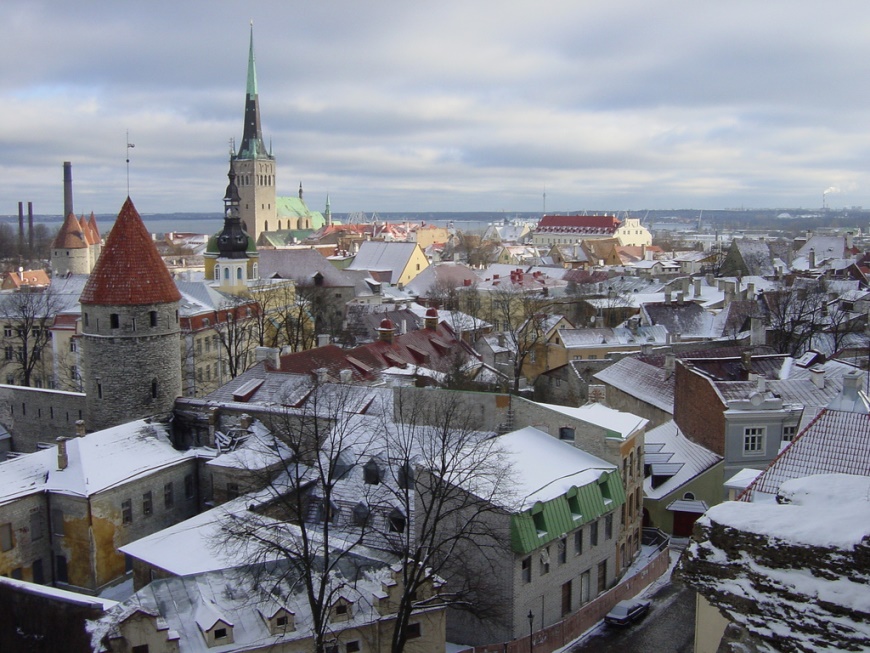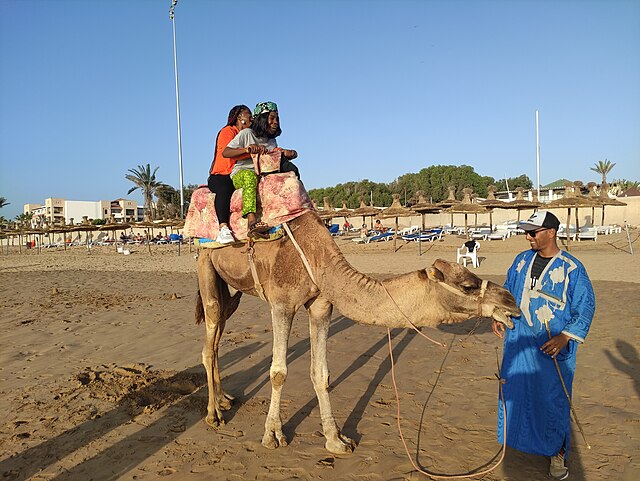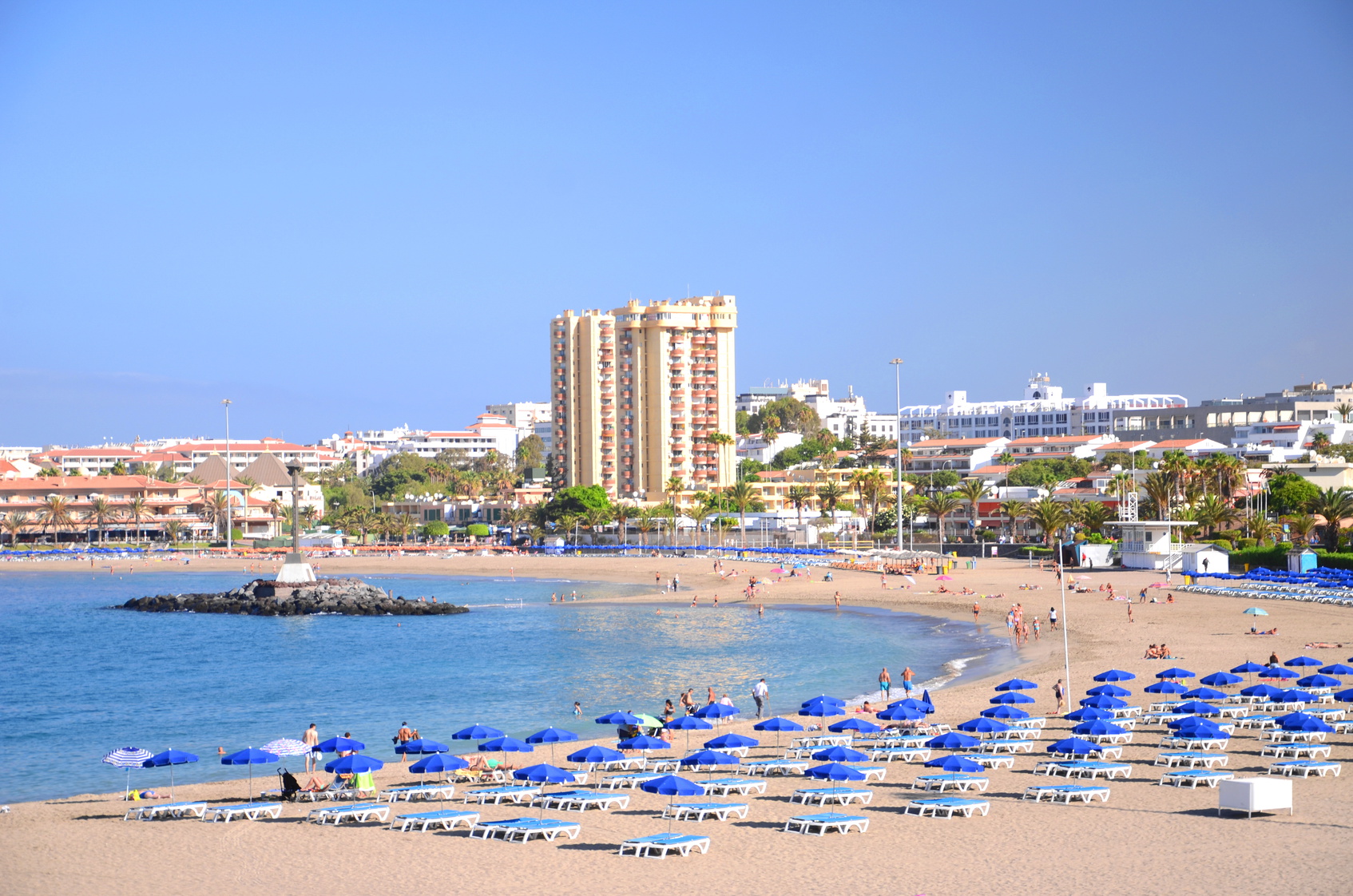The charming city of Tallinn is the capital city of Estonia, the most northerly of the Baltic states. It lies just 80km south of Helsinki on the Gulf of Finland. Many Westerners assume that these states were part of the former Soviet Union until its break up in the early 1990s yet this is hardly the case as almost all Western Governments continued to recognize Estonia, Latvia and Lithuania as sovereign states which were illegally occupied from 1940 until 1991 when the USSR was finally dissolved. Estonia was very quickly able to throw off the shackles of Communism and re-establish itself as a vibrant, independent European country living under the principles of democracy. It is a full member of the European Union and adopted the Euro as its currency in 2011.
Whilst 1991 was the all important year in terms of recent political history for the people of Estonia, it was another eleven years before many of us dusted off our atlases to look up Tallinn as the city hosted the 2002 Eurovision Song Contest. As such, a big thank you must go to Tanel Padar, Dave Benton and 2XL for winning the tournament the previous year in Copenhagen and putting Estonia on the map as far as millions of Europeans were concerned. It will come as no great surprise to Eurovision fans that the competition in Tallinn was won by neighbouring Latvia’s contestant.
Today the historic old town of Tallinn is a UNESCO World Heritage Site and was European Capital of Culture in 2011 which attracts visitors all year round. The main arrival points are via the city’s Lennart Meri Tallinn international airport, the impressive cruise terminal or at the Balti Jaam central rail station.
Getting There to Tallinn
By Air – Estonian Air provide services from destinations all over Europe whilst major budget airlines including Ryanair and easyJet provide a multitude of routes. The airport is only about 5km from the city center where buses, taxis and private transfers are readily available for transport to your hotel. Unfortunately, there are a number of taxi firms who have gained a bad reputation for overcharging new arrivals so you’d be well advised to pre-book a transfer from the airport with a reputable provider.
By Sea – The Port of Tallinn consists of five different ports attracting local seafaring traffic, international ferry services and a range of cruise vessels. There are three passenger terminals which dealt with more than nine million passengers over the last year. If you’re hopping around the Baltic by ferry you’ll find frequent services to and from Helsinki, Stockholm and St Petersburg which arrive at the Old City Harbour. The most recently opened quay has been built largely to cater for the growing number of cruise ships of all shapes and sizes which have added Tallinn to their list of destinations. On arrival you can again have a driver and private vehicle awaiting your arrival for the short journey into the historic centre.
When to Visit
Whilst the phrase “it’s Baltic” has become widely accepted as a way to describe extremely cold weather the climate in Tallinn is surprisingly mild considering its latitude thanks to its coasterly location. The majority of visitors arriving on city breaks or by cruise ship during the summer months can expect daytime temperatures to hover around the 20°C mark though the evenings can get decidedly chilly. The biggest surprise for visitors at this time will be that there is over 18 hours of daylight at this northerly latitude. Average winter temperatures are usually around 0°C though unpredictable weather patterns can push temperatures as high as 5°C and as low as -18°C. But don’t be put off taking a winter break to Tallinn as there’s nothing like seeing the beauty of the old town covered in snow.
An extra special time to visit is during the Christmas markets which begin in late November and turn the town hall square in the old city into something out of a fairy tale. Summer visitors should look out for the proposed dates of the ‘Tallinn Medieval Days’ when a range of events take place to celebrate the city’s medieval history. Better known is the annual Beer Festival (Õllesummer) which takes place every July attracting some big name performers from the music world.
A particularly unique event is the Song and Dance Celebration when thousands of people from all over the country come together in Tallinn to form an amateur choir of some 30,000 people who perform in front of enormous crowds at the Song Festival Grounds. This event dates back to 1869 and is recognised by UNESCO in an attempt to “raise awareness of cultural heritage”. Unfortunately, it only takes place every five years with the next one due in 2019.
Main Tourist Attractions
Tallinn is an extremely visitor friendly destination with the majority of the main sights accessible on foot in the Old Town. This small historic centre is little over a square kilometre in size and is made up of an upper and a lower part. The highlight of the upper town is the impressive Toompea Castle which dates back to the 9th century and currently serves as home to the Estonian Parliament. The lower town houses an impressive selection of medieval buildings including the 12th century St. Olaf’s Church which at 124 metres in height is one of the city’s major landmarks.
A number of interesting sights lie a couple of kilometres east of the Old Town such as Peter the Great’s Kadriorg Palace which he built for his wife Catherine. Today it serves as a museum of foreign art. If you’re visiting in summer and fancy a break from sightseeing then you should head out to the popular beach at Pirita. It lies about 2km beyond Kadriorg and is also home to a marina which was developed for sailing events during the 1980 Olympic Games in Moscow. If the water’s too cold for a dip you can rent a boat and take a short jaunt along the Pirita River. For less crowded beaches during the summer months you should jump on a ferry to one of the small islands nearby such as Naissaar or Aegna where you’ll find much nicer options.
Another attraction which deserves a special mention is the Estonian Open Air Museum which lies about 8km west of the centre in Rocca al Mare. This is the full scale reconstruction of a typical Estonian village as it would have been in the 18th century. Well worth a visit for children and adults alike.
Getting Around – It’s very easy to walk around the main sights of the tiny old town on your own or join one of the walking tours offered for tips only by local students. Every day at midday one of these free tours in English departs from outside the main tourist information office (Niguliste 2). For going a little further afield you’ll find that Tallinn is a particularly cycle friendly city where a number of agencies rent bikes. If that sounds like too much exercise then try the ‘hop-on, hop-off’ bus services which offer three different routes to choose from in and around the city. Tallinn’s tram network is another nice way to get around and see some of the outlying areas. Be warned that taxis are not bound by established official city fares so can effectively charge what they wish provided they display their prices in their cab. Not surprisingly many unsuspecting visitors have felt ripped off by this practice.
Where to Stay
When it comes to choosing classical European cities for a short break, Tallinn can certainly hold its own alongside better known destinations such as Prague and Vienna. It has a great selection of accommodation to suit a wide range of visitors. Not surprisingly the most expensive options lie in or just outside the old town such as the historic Hotel Telegraaf or Hotel Schlossle. But in most cases the lovely hotels in this part of town are well worth the extra expense and are particularly well suited for couples looking for a romantic getaway.
In a city where the information technology industry is thriving there’s a large influx of business travellers arriving throughout the year. The central business district surrounds the old tourist centre so you’re never likely to be far from the location of your meeting so can also select accommodation in the very same Kesklinn (city centre) district. For more of a classic business hotel take a look at the highly recommended Radisson Blu Sky Hotel.
Budget travellers will find a whole host of hostels scattered around the city centre and all the way out to the beach at Pirita. A couple which have earned particularly high plaudits are the Red Emperor and Monk’s Bunk both of which have their own lively bars and great staff who organise all kinds of social activities around town.




